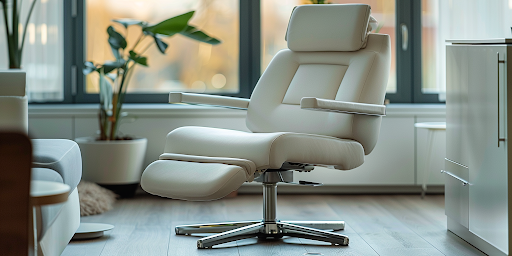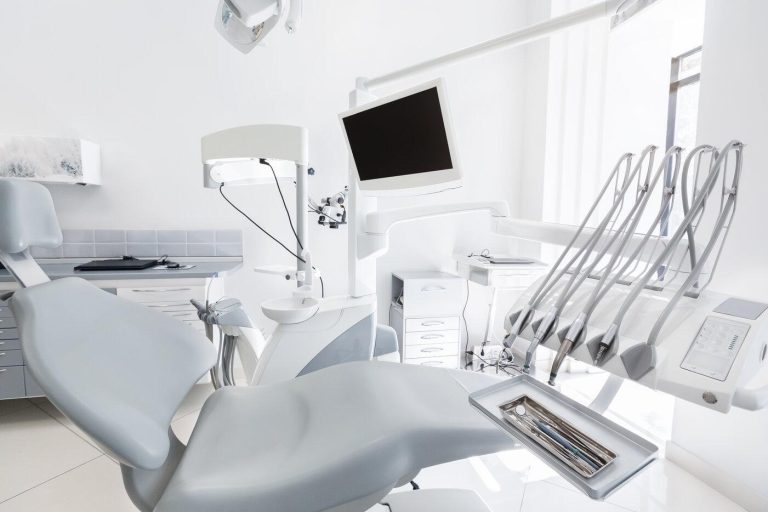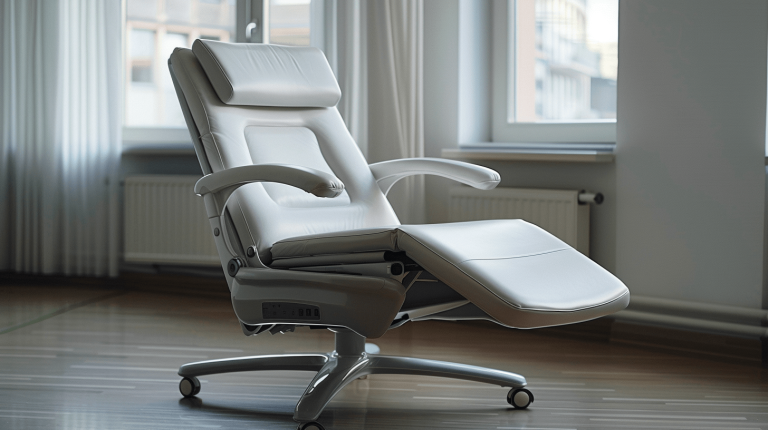Ensuring a clean and sanitary environment in healthcare settings is crucial, making the ability of furniture surfaces to resist contamination a key factor in selecting the right equipment. Clinical chairs, in particular, must be designed to facilitate easy cleaning and sanitization to prevent the spread of infections. Antimicrobial chairs are becoming increasingly popular in medical facilities due to their enhanced ability to inhibit the growth of bacteria and other harmful microorganisms.
These chairs are crafted with special materials and finishes that reduce the risk of contamination, offering an added layer of protection for both patients and healthcare providers. In this article, we provide tips for effectively cleaning clinical chairs and outline what to look for to choose the ideal chair for your healthcare facility. Understanding these elements will help you select chairs that meet hygiene standards and promote a safer space for everyone.
Are You Looking for Versatile Chairs for Clinical Spaces?
EMP Living specializes in adaptive seating solutions tailored to meet the demanding needs of medical environments. Our range of clinical chairs, including the REAL X-ray, REAL Mammography and REAL Rehab Therapy chairs, are designed with both patient comfort and practitioner efficiency in mind.
Custom-Built for Medical Settings
Our expertise in medical seating has led to the development of chairs that ensure patient safety and shorten examination time. Our chairs provide supportive and stable seating, making examinations quicker and more cost-effective:
- Supportive Design: Our chairs position patients safely and comfortably, facilitating efficient examinations.
- Safe Operation: Equipped with a stable base and an easy-to-operate brake, our chairs have been tested in real-world environments to ensure reliability.
- Practical Adjustments: Easily adjustable and maneuverable, our chairs accommodate individual patient needs, simplifying seated examinations.
- Advanced Technology: The REAL X-ray chair features an electrically operated system with remote-controlled height adjustments, making it ideal for imaging centers. Similarly, the REAL Mammography chair features an electric height control, tilt, and backrest adjustments, ensuring ergonomic comfort for patients.
Get in touch to learn more about our clinical chairs. We can arrange a video call to demonstrate our products and address any questions you might have.
Contact us for more information
Cleanliness in Clinical Environments: Is it Easy to Clean a Medical Chair?
Yes, cleaning an examination chair can be relatively easy, especially with designs that prioritize hygiene and durability. In a health care setting, specialist seating is engineered with materials that resist stains and are easy to wipe down. Many medical chairs feature surfaces that can be cleaned quickly with a dry cloth for daily maintenance, while more thorough sanitization can be done using approved disinfectants.
Innovative ergonomic solutions often incorporate antimicrobial materials and seamless construction, reducing the number of crevices where dirt and germs can accumulate. These features make it straightforward to maintain cleanliness and support infection control protocols in medical environments.
What safety features do clinical chairs have?
What Are the Best Materials for Patient Chairs?
When selecting materials for clinical chairs, it’s essential to consider factors such as durability, ease of cleaning, and infection control. Here are some of the best materials for clinical chairs:
- Vinyl Upholstery: Vinyl is a popular choice for clinical chairs due to its water-resistant and stain-resistant properties. It is easy to wipe down with disinfectants, making it ideal for environments where hygiene is critical.
- Antimicrobial Fabrics: Fabrics treated with antimicrobial agents help reduce the growth of bacteria and viruses on the surface, enhancing infection control. These materials are designed to withstand frequent cleaning without degrading.
- Polyurethane: Polyurethane is a durable material that offers flexibility and comfort. It is resistant to moisture and chemicals, making it easy to sanitize. Its smooth surface allows for quick and efficient cleaning.
- Thermoplastic Polyolefin (TPO): TPO is a resilient material known for its toughness and resistance to chemicals. It is commonly used in clinical settings because it can endure repeated disinfection and maintain its integrity over time.
- Stainless Steel: Often used for chair frames and components, stainless steel is robust and resistant to corrosion. It is easy to clean and sanitize, making it suitable for clinical environments where hygiene is paramount.
- High-Pressure Laminate (HPL): HPL is used for chair surfaces that require durability and ease of cleaning. It is resistant to scratches and chemicals, making it a practical choice for high-traffic areas in healthcare facilities.
What Materials Should Be Avoided?
In clinical settings, certain materials should be avoided for chairs due to their potential to harbor bacteria, difficulty in cleaning, or lack of durability. Fabric upholstery, especially those that are not treated with antimicrobial agents, can absorb spills and bodily fluids, making them harder to sanitize thoroughly and increasing the risk of contamination.
Materials like untreated wood, while aesthetically pleasing, can also pose challenges as they may absorb moisture and deteriorate quickly under constant exposure to disinfectants. Additionally, low-quality plastics or materials prone to cracking and fading should be avoided, as these can create crevices where dirt and germs accumulate, compromising the hygiene and longevity of the furniture. Choosing materials that are resistant to stains, water, and harsh cleaning agents is essential for maintaining a sanitary environment in healthcare facilities.
What are clinical chairs used for?
Effective Infection Control: Cleaning Protocols for Clinical Chairs
Effective cleaning of clinical chairs is crucial to maintain a hygienic environment within healthcare facilities and offices. Proper cleaning protocols help reduce the spread of bacteria and ensure the health and safety of patients and healthcare professionals.
Routine Cleaning
Routine cleaning involves regular maintenance to ensure that healthcare chairs remain free from contaminants:
- Use a Clean Cloth: A clean, absorbent cloth is essential for wiping down surfaces.
- Liquid Cleaners: Use liquid cleaners that are safe for the chair’s materials. These cleaners should be capable of removing dirt and grime without damaging the fabric.
- Low-Level Disinfectants: These are suitable for everyday cleaning in healthcare settings. Ensure the disinfectants meet industry standards to maintain effectiveness.
- Clean All Surfaces: Ensure that all parts of the chair, including chair arms and padded armrests, are thoroughly cleaned. These areas are frequently touched and can harbor bacteria.
- Constant Cleaning: Routine cleaning should be performed regularly to maintain a hygienic environment.
High-Level Disinfection
High-level disinfection (HLD) is a critical process in healthcare settings that involves the use of chemical agents to eliminate all microorganisms on medical instruments and surfaces, except for a high number of bacterial spores. This method is essential for ensuring the safety and efficacy of reusable medical devices, such as endoscopes and surgical instruments, which come into contact with mucous membranes or sterile tissues.
High-level disinfection is typically performed using liquid chemicals, such as glutaraldehyde, hydrogen peroxide, or ortho-phthalaldehyde, which are effective in killing bacteria, viruses, and fungi. The process requires careful adherence to manufacturer instructions and regulatory guidelines to ensure that the disinfectant concentration, exposure time, and temperature are sufficient to achieve the desired level of microbial elimination.
Specialist Cleaning Solutions
Certain scenarios require specialized cleaning products:
- Enzymatic Cleaners: These cleaners are effective in breaking down organic matter on surfaces, such as blood or bodily fluids. They are particularly useful in medical offices and infusion spaces.
- Bleach Solutions: In high-risk areas, a bleach solution can be used for disinfection. However, it is essential to use these solutions correctly to avoid damaging the chair’s materials.
- Clean Water Rinse: After using harsh cleaners like bleach, rinse the surfaces with clean water or distilled water to remove any residue that might harm the chair fabric.
Environmental Cleaning
In addition to cleaning the chairs, environmental cleaning of the surrounding areas is crucial. This includes cleaning other furniture items and surfaces in the healthcare setting. Ensure that cleaning protocols are consistent across different facilities to maintain a high standard of hygiene.
How do I maintain a mobility chair? | Essential tips for long-lasting performance
Modular and Ergonomic Design: Simplifying the Cleaning of Clinical Chairs
When it comes to maintaining cleanliness and ensuring the functionality of clinical spaces, innovative designs play a crucial role. Modular and ergonomic design features not only enhance the comfort and usability of clinical chairs but also contribute to easier cleaning and maintenance.
Modular Design for Easy Maintenance
Modular design allows clinical chairs to be disassembled into separate components, making cleaning and maintenance much more efficient. Here’s how this feature benefits clinical settings:
- Disassembly and Access: Modular chairs can be taken apart into manageable sections, such as the seat, backrest, and armrests. This disassembly facilitates thorough cleaning of each part, ensuring that even the hard-to-reach areas are sanitized properly.
- Replacement and Upgrades: Modular components can be replaced or upgraded as needed, without the need to purchase an entirely new chair. This flexibility not only extends the furniture’s life but also allows for easier maintenance and adherence to cleanliness standards.
- Customizable Configurations: The ability to modify and adjust the configuration of the chair ensures that it can adapt to various clinical environments and patient needs. This adaptability supports ongoing maintenance and sanitation.
Ergonomic Solutions for Enhanced Cleanliness
Ergonomic design in clinical chairs ensures that they are not only comfortable but also easier to clean. EMP Living’s clinical chairs incorporate several ergonomic features:
- Antimicrobial Properties: EMP Living’s chairs are designed with antimicrobial fabrics that resist the growth of bacteria and other microorganisms. This feature minimizes the risk of infection and simplifies the cleaning process.
- Coated and Nonporous Materials: Coated fabrics and nonporous materials in chairs ensure that fluids and contaminants do not penetrate the surface. These materials can be easily wiped down with damp cloths and disinfectants, reducing the risk of bacterial spread.
- Fluid Barriers: Features like moisture barriers in the upholstery prevent bodily fluids from seeping into the chair’s interior, making it easier to clean and reducing the potential for contamination.
Easy Adjustments and Maneuverability
- Powered Controls: EMP Living’s clinical chairs are equipped with battery-powered controls that simplify adjustments. This ergonomic feature ensures that chairs can be easily repositioned or modified to meet patient needs without extensive manual handling, which can otherwise complicate the cleaning process.
- Compact Design: Chairs like the REAL Mammography chair are designed with a small frame that fits through most doorways and into various rooms, ensuring that they can be easily moved for cleaning or reconfiguration.
Cohesion and Compliance
- Consistency Across Facilities: Modular and ergonomic designs ensure that cleaning protocols can be consistently applied across different facilities. This is particularly important in settings where multiple chairs are used, as it helps in maintaining a standard level of hygiene and compliance with infection control risk assessments.
- Durable Materials: The use of durable materials ensures that the chairs withstand frequent cleaning and disinfecting without deteriorating. This durability supports environmental cleaning practices and reduces long-term maintenance costs.
EMP Living’s specialized chairs meet the stringent requirements of modern clinical environments. Our design innovations contribute to a safer, cleaner, and more efficient healthcare setting.
EMP Living: Adaptive Seating Solutions for Clinical Settings
EMP Living’s adaptive seating solutions have an innovative ergonomic design that enhances both comfort and functionality. Our REAL Clinical Chairs are engineered to support independence across various settings through modular components and powered adjustments. Features like antimicrobial fabrics, customizable configurations, and durable materials ensure that each piece not only meets but exceeds cleanliness standards.




